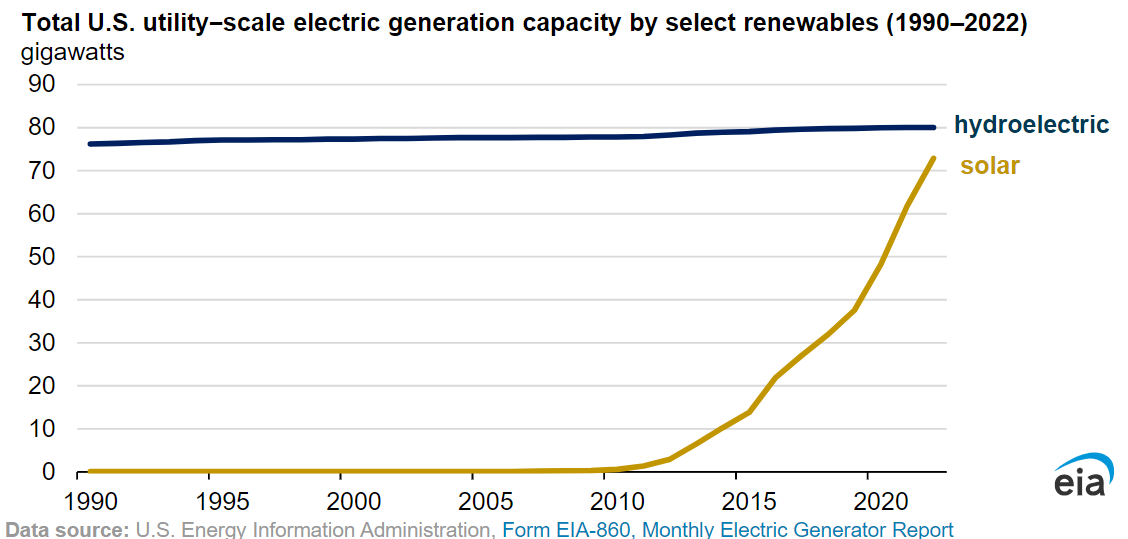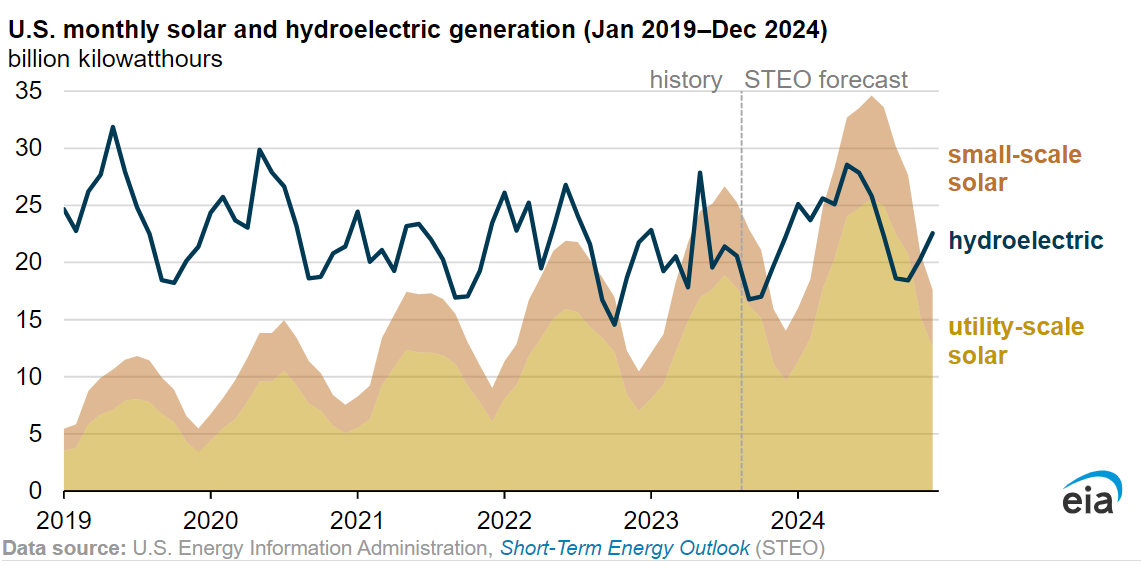Solar continues to climb the ranks of electricity generation sources as the United States pursues an emissions-free and affordable energy system. Total solar generation has grown 12x since 2013, and utility-scale solar installations are expected to grow 52% this year over 2022 totals.
The Energy Information Administration (EIA) released a report that forecasts solar will surpass total electricity generation from hydroelectric dams in 2024. EIA expects solar to produce 14% more electricity next year than hydropower.
Hydroelectric dams have long been a major provider of emissions-free electricity in the United States. Wind-based electricity passed the milestone of providing more electricity than hydropower in 2019, becoming the most-used emissions-free source of electricity at that time.
Solar is now set to pass the milestone next year, said EIA. It has achieved the feat through exponential growth, increasing at an annual growth rate of 44% from 2009 to 2022, while hydroelectric power has remained relatively flat.

Solar represented 54% of all new electricity-generating capacity additions in the first quarter of 2023, according to Wood Mackenzie. More than 125 GW of solar, both large utility-scale and small-scale projects, have been installed in the U.S. to date. Wood Mackenzie projects that cumulative installations will more than double by 2028 to 375 GW.
Growth in solar is not the only condition closing the gap, however. Hydroelectric dams depend on long-term weather patterns and beneficial hydrologic conditions for their output. Through August this year, weather conditions have led to reduced output.
“During times of high demand or high prices, hydroelectric generators have reservoirs that can store water to be released through dams to generate electricity,” said EIA. “This ability to control the output is limited by long-term hydrologic conditions and other complications associated with water rights and recreational uses. Despite these challenges, hydropower continues to be a key source in the hourly pattern of generation in areas like the Pacific Northwest.”
Hydropower represents roughly 8% of U.S. electricity generation, while solar stands around 7.2%. The top three sources of electricity are natural gas (44%), coal (16.4%), and wind (11.6%).
The Federal Energy Regulatory Commission (FERC) said there are 83 GW of “high probability” solar additions in the project pipeline over the next three years, and 214 GW of solar projects in the three-year queue in total. When compared with the 564 GW of natural gas capacity installed and active today, the total solar project pipeline is an impressive ramp-up of growth ahead. Based on FERC’s data, it is possible that solar could surpass natural gas by 2030 as the top electricity source in the United States.
This content is protected by copyright and may not be reused. If you want to cooperate with us and would like to reuse some of our content, please contact: editors@pv-magazine.com.









By submitting this form you agree to pv magazine using your data for the purposes of publishing your comment.
Your personal data will only be disclosed or otherwise transmitted to third parties for the purposes of spam filtering or if this is necessary for technical maintenance of the website. Any other transfer to third parties will not take place unless this is justified on the basis of applicable data protection regulations or if pv magazine is legally obliged to do so.
You may revoke this consent at any time with effect for the future, in which case your personal data will be deleted immediately. Otherwise, your data will be deleted if pv magazine has processed your request or the purpose of data storage is fulfilled.
Further information on data privacy can be found in our Data Protection Policy.